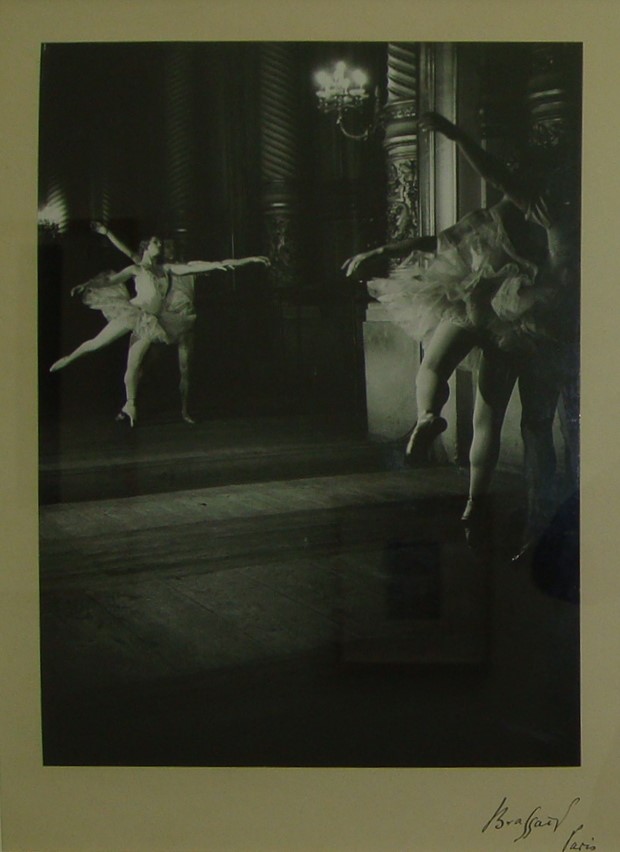Biography
Brassaï (Gyula Halász) was a French artist, especially active as a photographer, of Hungarian origin.
Brassaï’s works are ground-breaking for his time, as he mastered the then difficult technique of photography at night. He did not get stuck in the technical side of things; rather, in his photographs he expressed his love for Paris and its inhabitants. He had a sharp eye “for what happens between the people of the shadows. … Brassaï went into the bowels of the city and drew from them human fates that we did not know” (L. Fritz Gruber).
His pictures are always sincere and convincing, because he did not attack the portrayed people, but – even if they belonged to the “underworld” – was able to win them over to trusting cooperations. Even when he made weaknesses visible, he did not make a fool of them; rather, a quiet smile is noticeable. Brassaï himself said about this: “There are many photographs which are full of life but which are confusing and difficult to remember. It is the force of an image which matters.
What is less well known is that Brassaï was – besides Man Ray – also the photographer of the Surrealists. He photographed crystals and plants in such a way that they were removed from their usual context and mutated into free entities. In this way they could unfold their imaginary power without any constraints on content.
Brassaï was a pioneer in the field of graffiti photography. During nightly walks through Paris since the 1920s, he took a liking to the numerous murals carved into walls and began to capture them photographically. However, these photographs were not purely documentary, but were created with artistic pretension by the grazing light that highlights the carvings in the walls and by the selection of the detail. Brassaï published nine of these photographs together with the short essay “From the cave wall to the factory wall” (original French title: Du mur des cavernes au mur d’usine) on two pages in the magazine of the Surrealists, Le Minotaure, in 1933. There Brassaï writes in poetic language a plea for graffiti, which he acknowledges as an original and authentic art form. He received a lot of positive feedback and encouraged other artists, such as Jean Dubuffet, to deal with walls and their graffiti.
While there were already several photo exhibitions of him in America and travelling exhibitions in Europe during his lifetime, he was appreciated in France especially for his drawings and sculptures. For Harper’s Bazaar, he spent years photographing travel reports on Greece, Turkey, Italy, Spain, Sweden, Morocco and from the USA on Louisiana and New York. The versatile artist also made two films, for which he received an award in Cannes in 1956. When he was 75, he was invited to Les Rencontres d’Arles with his friend Ansel Adams and was celebrated by the young audience there.
Brassaï created, among other things, a medal on Picasso for the Club français de la médaille.
Two simultaneous exhibitions in June 2011 in Berlin, curated by Kylikki Zacharias, were devoted to different aspects of the retrospective of Brassaï’s work. The Scharf-Gerstenberg Collection showed graffiti photos that the photographer had discovered and taken over many years on the walls of Parisian houses. The neighbouring Berggruen Collection offered portraits of artists from Pablo Picasso to Henri Matisse and Georges Braque.
